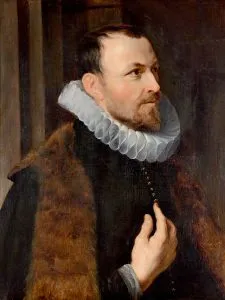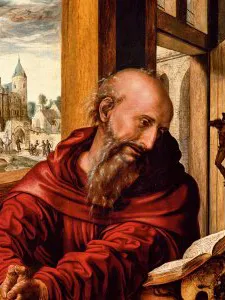Who was Nicolaas Rockox
Nicolaas Rockox
 Nicolaas Rockox Nicolaas Rockox Nicolaas Rockox (1560-1640) was a highly respected Antwerp citizen of many talents who played a major political role during the first half of the 17th century. In addition, he was a respected humanist, antiquary, humanist, numismatist, patron and art ollector.
Nicolaas Rockox Nicolaas Rockox Nicolaas Rockox (1560-1640) was a highly respected Antwerp citizen of many talents who played a major political role during the first half of the 17th century. In addition, he was a respected humanist, antiquary, humanist, numismatist, patron and art ollector.
Burgomaster
In 1584, Rockox graduated in law at the University of Douai. In the very same year he was conscripted into the Civic Guard to defend his home town which was being besieged by Alexander Farnese. Four years later, Rockox became an alderman for the first time – an office he was to hold for eight terms in all. In 1603, he was appointed Buitenburgermeester (one of two burgomasters and responsible for external affairs), a position which he also held for eight terms. When he was not sitting on the bench of aldermen, he held other important posts including Justice of the Peace, guildmaster of the Cloth Hall, president of the Arquebusiers’ Guild, chief treasurer and head of the Civic Guard. Hence for almost half a century, uninterrupted, Rockox played a leading role in the public life of Antwerp.
.
Humanist
 Jan Sanders Van Hemessen, St.JeromeJan Sanders Van Hemessen, St.JeromeRockox shared his knowledge of classical antiquity with prominent figures, antiquarians, artists and scholars alike. He built up an international reputation with his own splendid collection of antiques and ancient coins. In artists’ circles, he associated with a number of contemporaries including Pieter Paul Rubens (see below), Antoon van Dyck, who painted his portrait on several occasions and Frans Snijders, his closest neighbour in the Keizerstraat. Rockox also maintained close contact with the lawyer Hugo Grotius, the humanist Gaspard Gevartius, the classical philologist Justus Lipsius and the printers Jan and Balthazar Moretus. His house was an important meeting place for humanists.
Jan Sanders Van Hemessen, St.JeromeJan Sanders Van Hemessen, St.JeromeRockox shared his knowledge of classical antiquity with prominent figures, antiquarians, artists and scholars alike. He built up an international reputation with his own splendid collection of antiques and ancient coins. In artists’ circles, he associated with a number of contemporaries including Pieter Paul Rubens (see below), Antoon van Dyck, who painted his portrait on several occasions and Frans Snijders, his closest neighbour in the Keizerstraat. Rockox also maintained close contact with the lawyer Hugo Grotius, the humanist Gaspard Gevartius, the classical philologist Justus Lipsius and the printers Jan and Balthazar Moretus. His house was an important meeting place for humanists.
Mecenas
Or patron of the arts; this was above all Rockox’s role for Pieter Paul Rubens. When Rubens returned from Italy after an absence of eight years, Rockox commissioned him to paint the famous ‘Adoration of the Magi’ (Prado, Madrid) to be hung in the Hall of State in the Town Hall of Antwerp. Rubens regarded this as his first official commission. Rockox then commissioned Rubens to paint ‘Samson and Delilah’ which he hung on the chimney breast of ‘t Groot Saleth’ or Great Parlour in his own house. Today it hangs in the National Gallery in London. As president of the Arquebusiers’ Guild, Rockox, together with the deans of the guild, commissioned Rubens in 1611 to paint the famous triptych ‘The Descent from the Cross’. It was created for the guild’s altar in Antwerp cathedral and can still be seen there.
These are just a few examples which demonstrate Rockox’s admiration for Rubens, but in his home hung paintings by other masters whom he also held in great esteem like Pieter Aertsen, Bruegel, Jan Wildens, Antoon van Dyck and many more.
Numismatist
Rockox possessed a superb collection of coins which he personally described in a catalogue compiled and annotated in his own hand (Meermanno Westreenianum Museum, The Hague). Rockox’s coins were of excellent quality and his collection remarkably complete; Greek and Roman coins from the 5th century BC through to the 2nd century AD. It was the subject of a lively correspondence with Nicolas Claude Fabri de Peiresc, the renowned French humanist, botanist and numismatist. And even here Rubens showed himself to be something of a kindred spirit to Rockox. They both collaborated with Jacob de Bie on the republication of the works of the engraver and numismatist Hubert Goltzius.






